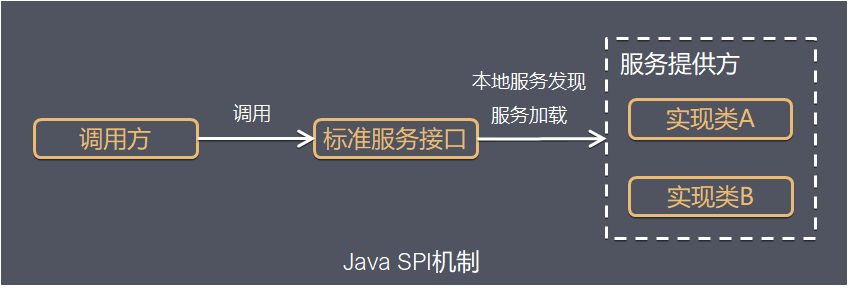1
2
3
4
5
6
7
8
9
10
11
12
13
14
15
16
17
18
19
20
21
22
23
24
25
26
27
28
29
30
31
32
33
34
35
36
37
38
39
40
41
42
43
44
45
46
47
48
49
50
51
52
53
54
55
56
57
58
59
60
61
62
63
64
65
66
67
68
69
70
71
72
73
74
75
76
77
78
79
80
81
82
83
84
85
86
87
88
89
90
91
92
93
94
95
96
97
98
99
100
101
102
103
104
105
| public final class ServiceLoader<S> implements Iterable<S> {
private static final String PREFIX = "META-INF/services/";
private final Class<S> service;
private final ClassLoader loader;
private final AccessControlContext acc;
private LinkedHashMap<String,S> providers = new LinkedHashMap<>();
private LazyIterator lookupIterator;
public void reload() {
providers.clear();
lookupIterator = new LazyIterator(service, loader);
}
private ServiceLoader(Class<S> svc, ClassLoader cl) {
service = Objects.requireNonNull(svc, "Service interface cannot be null");
loader = (cl == null) ? ClassLoader.getSystemClassLoader() : cl;
acc = (System.getSecurityManager() != null) ? AccessController.getContext() : null;
reload();
}
private int parseLine(Class<?> service, URL u, BufferedReader r, int lc, List<String> names) {
String ln = r.readLine();
if (ln == null) {
return -1;
}
int ci = ln.indexOf('#');
if (ci >= 0) ln = ln.substring(0, ci);
ln = ln.trim();
int n = ln.length();
if (n != 0) {
if (!providers.containsKey(ln) && !names.contains(ln))
names.add(ln);
}
return lc + 1;
}
private Iterator<String> parse(Class<?> service, URL u) throws ServiceConfigurationError {
ArrayList<String> names = new ArrayList<>();
InputStream in = u.openStream();
BufferedReader r = new BufferedReader(new InputStreamReader(in, "utf-8"));
int lc = 1;
while ((lc = parseLine(service, u, r, lc, names)) >= 0);
return names.iterator();
}
public Iterator<S> iterator() {
return new Iterator<S>() {
public boolean hasNext() {
return lookupIterator.hasNext();
}
public S next() {
return lookupIterator.next();
}
};
}
public static <S> ServiceLoader<S> load(Class<S> service, ClassLoader loader) {
return new ServiceLoader<>(service, loader);
}
private class LazyIterator implements Iterator<S> {
private boolean hasNextService() {
if (nextName != null) {
return true;
}
if (configs == null) {
try {
String fullName = PREFIX + service.getName();
if (loader == null)
configs = ClassLoader.getSystemResources(fullName);
else
configs = loader.getResources(fullName);
} catch (IOException x) {
fail(service, "Error locating configuration files", x);
}
}
while ((pending == null) || !pending.hasNext()) {
if (!configs.hasMoreElements()) {
return false;
}
pending = parse(service, configs.nextElement());
}
nextName = pending.next();
return true;
}
private S nextService() {
String cn = nextName;
nextName = null;
Class<?> c = Class.forName(cn, false, loader);
S p = service.cast(c.newInstance());
providers.put(cn, p);
return p;
}
}
}
|
